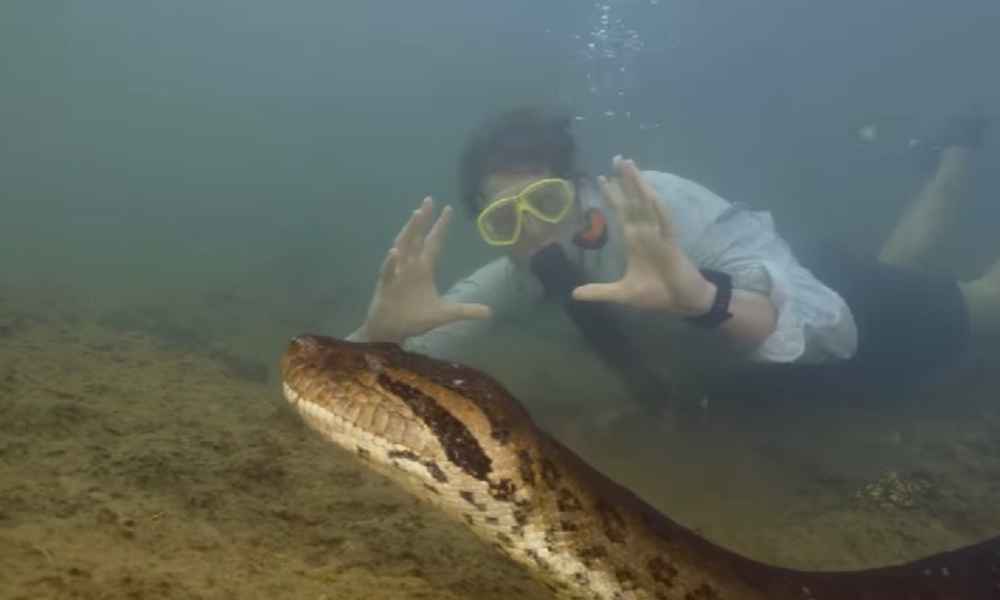On June 18, 2023, the dangers of deep-sea exploration became evident when the Titan submersible, with five people on board, went missing during its trip to the Titanic wreck site. After a long search, authorities found that the vessel had imploded, killing everyone inside. Before the disaster, The Titan submersible crew’s final message was, “All good here,” as revealed during a later hearing. So, let’s see more information about that investigation in this article.
Titan Submersible Crew’s Final Message: ‘All Good Here’
U.S. Coast Guard officials started a two-week investigation to find the facts behind the incident and suggest ways to prevent similar accidents. The Coast Guard revealed a message sent to the support vessel, Polar Prince, on June 18, 2023, during Monday’s hearing. The Polar Prince was the support vessel for the Titan submersible, which was on a deep-sea exploration mission. This message came shortly before the Titan submersible imploded.
At approximately 10 a.m. on June 18, the Polar Prince urgently inquired if the Titan crew could still see the support vessel on their display. The crew repeated this question seven times over seven minutes, underlining the pressing need for a response. The Titan crew eventually responded with “k,“ indicating they wanted a communications check.
However, the Polar Prince asked the same question three more times before declaring, “I need better comms from you.” At 10:14 a.m., the Titan crew responded with a “yes” and added, “All good here.”
Investigations and Unanswered Questions
The Titan’s implosion on June 18, 2023, sparked a global discussion about the future of private underwater exploration. The implosion resulted in the deaths of all five crew members: They are;
- Stockton Rush, 61, the founder
- French explorer Paul Henri Nargeolet, 77
- British explorer Hamish Harding, 58
- UK-based Pakistani businessman Shahzada Dawood, 48
- His 19-year-old son, Suleman
The Marine Board of Investigation, the Coast Guard’s highest level of marine casualty investigation, is currently reviewing the case. After the investigation, they will submit recommendations to the Coast Guard’s commandant. The National Transportation Safety Board is also conducting its investigation into this tragedy.
Jason Neubauer from the Coast Guard Office of Investigations, who led the hearing, said, “There are no words to ease the loss endured by the families impacted by this tragic incident.” He also added, “But we hope that this hearing will help shed light on the cause of the tragedy and prevent anything like this from happening again.”
On Monday, the Coast Guard reported that the Titan sat exposed to the weather for seven months between 2022 and 2023 while it was in storage. Moreover, during 2021 and 2022, the submersible experienced 118 equipment problems across 13 dives to the Titanic. Some of the issues included the front dome falling off when the sub was lifted from the sea, thrusters failing at a depth of 3,500 meters, and during one dive, the batteries died, trapping passengers inside for 27 hours. Further, OceanGate, the company that built the submersible, has faced criticism for its design choices, safety record, and regulatory compliance.
Tony Nissen, the former engineering director at OceanGate, was the first witness to testify to the U.S. Coast Guard. His testimony, which revealed details about the company’s internal workings and some conflicts between Stockton Rush and other OceanGate employees, is of significant importance. When Tony Nissen was hired, he did not know that the submersible was going to the Titanic wreck site. He said, “I was never told they were going to the Titanic.”
There, Nissen mentioned he had a hard time finding the right words to describe Stockton Rush. However, he described Stockton Rush as someone who would fight hard for what he wanted and rarely backed down. He said, “Most people would eventually back down from Stockton. It was like death by a thousand cuts.”
In his testimony, Nissen further said that during a 2018 test mission, he saw that lightning could damage the Titan’s hull. Also, they fired him in 2019 after he refused to let the submersible dive to the Titanic wreck.
OceanGate co-founder Guillermo Sohnlein, former operations director David Lochridge, and former scientific director Steven Ross are expected to testify later in the hearing, according to a list prepared by the U.S. Coast Guard. The investigation aims to identify the causes of this disaster and find ways to prevent similar incidents in the future. It will also determine if misconduct, negligence, or intentional law violations played a role in the tragedy. The two-week hearings will further review the Coast Guard’s search and rescue efforts.
OceanGate’s Response and Legal Battles

OceanGate currently has no full-time employees, but an attorney will represent the company during the hearing, according to a statement. The company has been fully cooperating with the Coast Guard and National Transportation Safety Board since the investigations began.
Also, Nargeolet’s family recently filed a $50 million wrongful death lawsuit against OceanGate. Known as “Mr. Titanic,” Nargeolet had completed 37 dives to the Titanic wreck, more than any other diver. Lawyers for his estate said the submersible had a “troubled history,” and OceanGate did not reveal important details about its durability.
Conclusion
The Titan submersible crew’s final message, “All good here,” was sent moments before the tragic implosion. This disaster highlighted serious safety issues with the vessel and raised questions about OceanGate’s practices. However, ongoing investigations, which are of utmost importance, aim to uncover the cause and prevent future deep-sea exploration accidents.
Also read;










